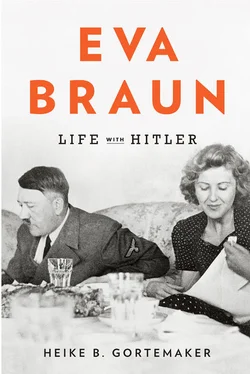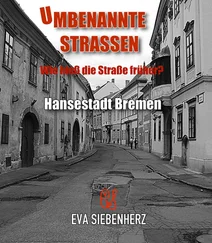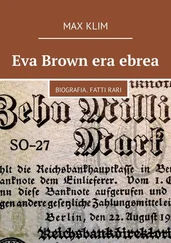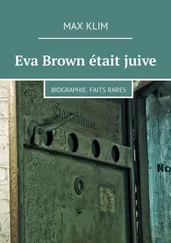By all appearances, Eva Braun was a young woman of average abilities from a conventional, lower-middle-class family. She clearly did not stand out due to her background or her interests. It is often mentioned that she was noticeably lacking in any political sympathies or interest in current events at all. 13Eva Braun was not sophisticated and glamorous like Magda Goebbels, nor was she politically influential like Annelies von Ribbentrop (daughter of the champagne manufacturer Otto Henkell), nor did she possess the fanaticism of a Gerda Bormann. But it is precisely her allegedly average ordinariness that invites us to reconstruct her historical circumstances. Her “normality” at the center of this atmosphere of “evil” is like an anachronism that brings this evil into relief and shows it in a new light.
On April 30, 1945, at around 2:30 p.m., Erich Kempka, Hitler’s driver since 1932, receives a phone call in the garage in the basement of the Reich Chancellery in Berlin. He is to get hold of fifty gallons of gasoline and bring it to the entrance of the “Führer bunker” in the Chancellery garden. He will be given further details there. When Kempka arrives with the men who are helping him carry the gasoline canisters, SS-Sturmbannführer Otto Günsche explains that the Führer is dead. He, Günsche, has been assigned to burn the body immediately, since Hitler did not want to end up “on display in a Russian panopticon.” Günsche and Kempka enter the bunker, where Martin Bormann hands over Eva Braun’s body to Kempka. She is wearing a dark dress that feels damp around the area of the heart. Kempka carries her upstairs to the exit, preceded by Heinz Linge (a valet) and Dr. Ludwig Stumpfegger carrying Hitler’s corpse. Günsche, Bormann, and Joseph Goebbels follow behind. Shortly before 3:00 p.m. they lay the two bodies next to each other in the sand on level ground, pour five barrels of gasoline over them, and set them on fire. The men stand in the bunker entrance and, as the bodies burn, raise their arm one last time in the Hitler salute. When artillery shells start falling on the site, they hurry back into the protection of the bunker. 1
1. HEINRICH HOFFMANN’S STUDIO
Almost sixteen years earlier, in October 1929, Hitler and Eva Braun met for the first time in the studio of photographer Heinrich Hoffmann. Hoffmann was a press photographer and portrait photographer well known in Munich after World War I, as well as a publisher and a National Socialist from the beginning. He ran a studio, called Photohaus Hoffmann, at 25 Amalienstrasse, near Odeon Square in central Munich. From there he supplied the Munich Illustrierte Presse (Illustrated Press) and domestic and foreign agencies with his pictures. Hoffmann’s father was a photographer as well, and he had apparently forced his son to follow in his footsteps; Hoffmann had owned a business of his own in Munich since 1909. 1Even before 1914, Heinrich Hoffmann had made a name for himself with the public and in artistic circles with his photography service—the “Hoffmann Photoreport”—as well as by taking portrait photographs. Still, he owed his flourishing business to the NSDAP. After World War I, which he spent on the French front as a reservist in a replacement detachment of the air force, he put his talents at the service of the far-right nationalist movement that was rising to power. 2
The Nazi Party’s House Photographer
It is no longer possible to reconstruct exactly when and in what circumstances Hoffmann met Hitler for the first time. Hoffmann’s daughter, Henriette von Schirach, later claimed that the Populist poet and writer Dietrich Eckart had put her father in contact with Hitler; Hoffmann himself said in his memoir that their first encounter was for purely business reasons, after an American photo agency offered him one hundred dollars for a photograph of Hitler, on October 30, 1922. 3As early as 1947, in an unpublished written statement in his own defense, Hoffmann claimed that the “American press” had offered him “a large sum for the first picture of Hitler” at the time. In order to get this money, “under any circumstances,” he contrived a seemingly chance encounter by suggesting that Hermann Esser, a good friend of Hitler’s, hold the reception for his upcoming wedding in Hoffmann’s house, on July 5, 1923. In this way, he planned to meet Hitler, who was to be one of the witnesses at the ceremony. 4
In fact, Hoffmann had been a member of the German Workers’ Party (Deutsche Arbeiterpartei, or DAP) since April 6, 1920—six months after Hitler had joined. Anton Drexler had founded the party in January of the previous year, in Munich, and it had recently changed its name to the National Socialist German Workers’ Party (Nationalsozialistiche Deutsche Arbeiterpartei, or NSDAP). Hoffmann began to publish the weekly newspaper Auf gut deutsch (In Good German), edited by the radical nationalistic and anti-Semitic Dietrich Eckart, Hitler’s friend, mentor, and father-figure. This failed poet used the paper to rail against the Weimar Republic, Bolshevism, and Judaism, under the motto “Germany, Awake!” 5There is much evidence to suggest that Hoffmann became friends with this circle of like-minded men, including Eckart, Hitler, and the journalist Hermann Esser, before he began to make himself useful to the NSDAP and especially to the man who became its leader starting on July 29, 1921: the aggressive “beer hall agitator” Adolf Hitler. 6Despite numerous requests, Hoffmann at first respected Hitler’s wish not to be photographed. Hoffmann’s first portrait of Hitler, in fact, appeared only after the failed Beer Hall Putsch of November 8–9, 1923, which made Hitler famous throughout Germany but also landed him in jail. (Hoffmann photographed him as a prisoner.) The following year, Hoffmann published a photo brochure titled (in German) “Germany’s Awakening, in Words and Pictures.” In 1926, the tireless Hoffmann, together with Hitler and Hermann Esser (their mutual friend and the first head of propaganda for the Party), founded a richly illustrated weekly Party newspaper, the Illustrierter Beobachter. That same year, at Hoffmann’s suggestion, the Völkischer Beobachter (The People’s Observer, the Nazi newspaper) included photographs for the first time—from Hoffmann’s own studio, needless to say.
The NSDAP was thus on the cutting edge, technologically speaking. Only a few years earlier it had been common practice to illustrate newspaper stories with drawings or engravings. Even The New York Times started to print photographs regularly only in 1922. Photojournalism’s true breakthrough, made possible by the development of the 35 mm camera in 1925, had only just begun. 7Unlike in America—and also England and France, where the British Daily Mirror and French Illustration had set up a daily photographic exchange service between London and Paris as early as 1907—in Germany the practice of printing photographs in newspapers only slowly gained popularity. 8
Among the pictures Hoffmann published in the Völkischer Beobachter was a series showing, for the first time, Hitler giving the Nazi salute with outstretched arm before a march of thousands of Party faithful on July 4, 1926, at the first NSDAP convention after it was reestablished in Weimar. 9Already, in the earliest phase of the Nazi Party’s rise to power, Hoffmann was putting his initiative and photographic skill behind the power of images—and the power of the Party’s not uncontroversial leader, who was controversial even within the Party at first. For Hitler and the propaganda campaign he was waging against both external opponents and opponents within the Party, Hoffmann soon made himself indispensable. He became Hitler’s “personal photographer.” 10From then on the leader of the Nazi Party almost never appeared without Hoffmann, whether on trips, on the campaign trail, or at lunch at Hitler’s local Munich pub.
Читать дальше












